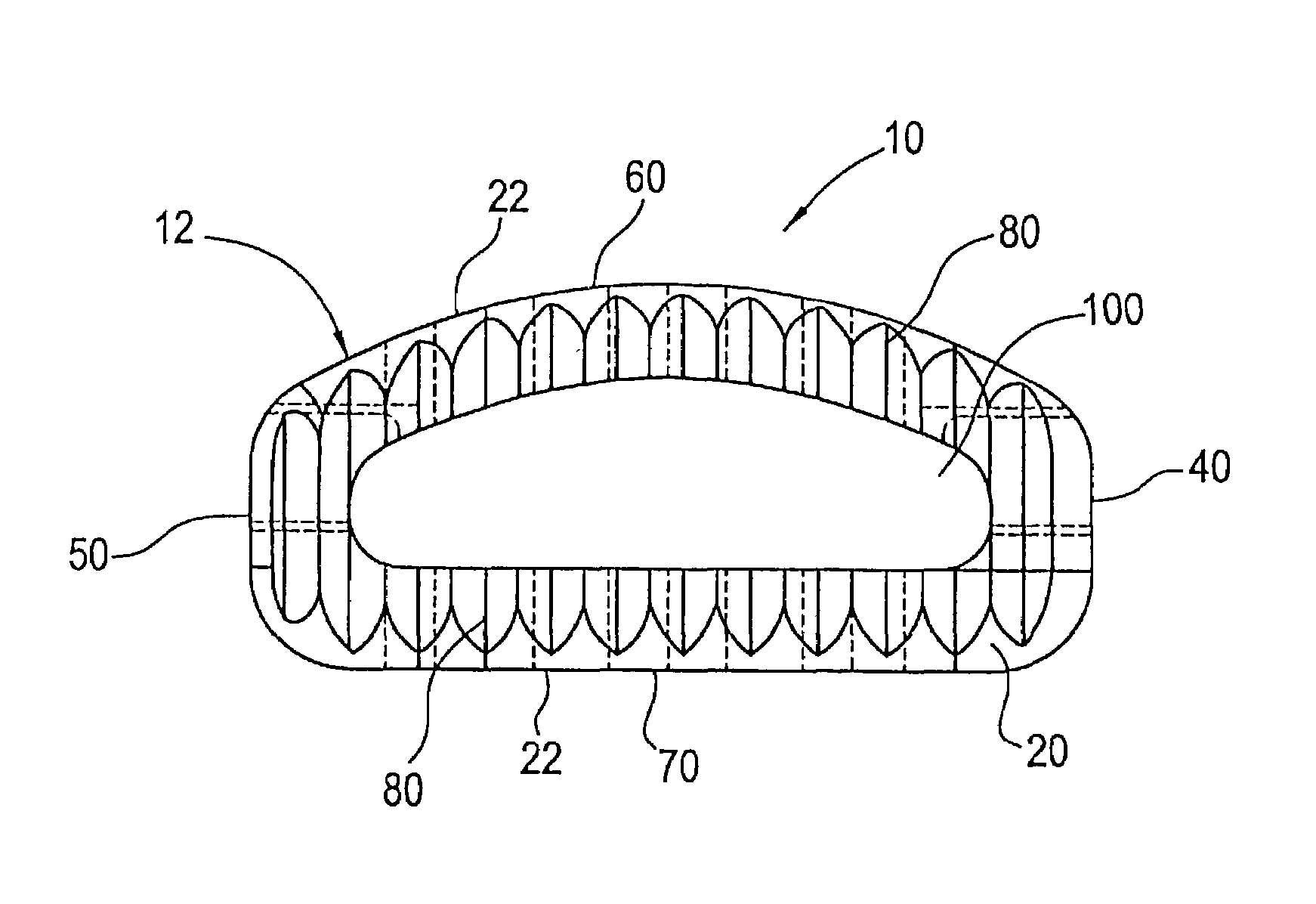Spinal fusion implant
a technology of spinal fusion and implant, which is applied in the field of spinal fusion implants, can solve the problems of nerve root compression or spinal stenosis, the most costly health problems of society, and the victims' suffering, and achieve the effects of reducing the failure rate of prosthetic implants, facilitating the insertion of prosthetic implants, and convenient and efficient positioning
- Summary
- Abstract
- Description
- Claims
- Application Information
AI Technical Summary
Benefits of technology
Problems solved by technology
Method used
Image
Examples
Embodiment Construction
[0051]Referring to the drawings, wherein the showings are for the purpose of illustrating the preferred embodiment of the invention only and not for the purpose of limiting same, FIGS. 1–3 illustrate a prosthetic device or implant 10 which is designed to be inserted in an intervertebral disk space between two vertebrae of the spinal column. Prosthetic implant 10 is illustrated as being a cage-like structure 12 having a top wall 20, a bottom wall 30, a front end wall 40, a back end wall 50, a first side wall 60, and a back side wall 70. As best illustrated in FIGS. 1 and 2, the top wall 20 includes a plurality of ridge structures 80 which are positioned along the longitudinal length of prosthetic implant 10. As illustrated in FIG. 3, ridge structures 80 are also included on bottom wall 30. The ridge structures can be cut into the top and bottom walls and / or be formed by a molding process. The ridge structures are designed to bite into and / or readily form a rigid contact with the unde...
PUM
 Login to View More
Login to View More Abstract
Description
Claims
Application Information
 Login to View More
Login to View More - R&D
- Intellectual Property
- Life Sciences
- Materials
- Tech Scout
- Unparalleled Data Quality
- Higher Quality Content
- 60% Fewer Hallucinations
Browse by: Latest US Patents, China's latest patents, Technical Efficacy Thesaurus, Application Domain, Technology Topic, Popular Technical Reports.
© 2025 PatSnap. All rights reserved.Legal|Privacy policy|Modern Slavery Act Transparency Statement|Sitemap|About US| Contact US: help@patsnap.com



